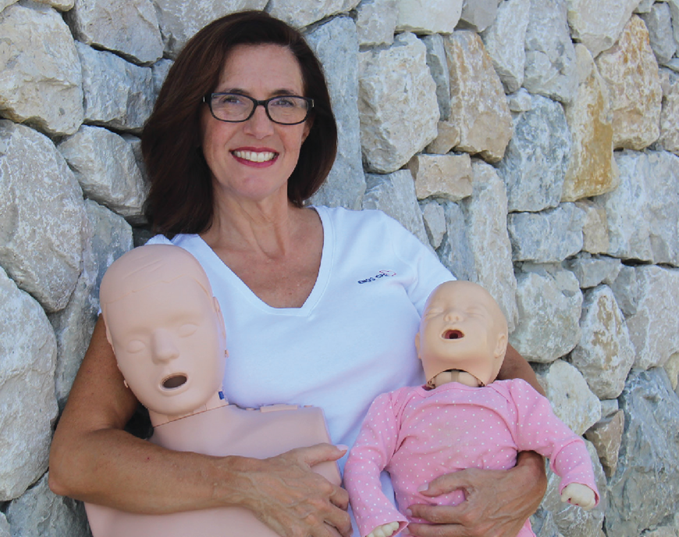Not much room to answer these great questions here — I will try! Go online or sign up for a class to learn more! CPR is so much easier than before!
- How would I know that someone needs CPR? Could I hurt them if they did not need it? CPR is needed if unresponsive and no “normal” breathing. Air may move, but it will not seem regular/quiet/ effortless. If ever unsure, call 911 and let them guide you. What if you started CPR on your uncle, but he was just drunk? Trust me, he will tell you when to stop.
- Is giving breaths during CPR not important anymore? When you push with two hands (the traditional — and most common — adult CPR), you are pushing so hard and deep to pump the heart, that you are, unintentionally, creating a passive form of breathing. It’s like being hugged so tight that it knocks the wind out of you — over and over, more than 100 times a minute. There is no need to stop to give breaths with hands-only CPR! But do know that infants and children need breaths! Interesting changes like this will be covered in your CPR class!
- Can I be sued or fired if I help a stranger or coworker but they have a poor outcome? No! There is a Texas Good Samaritan Act that protects you if you are volunteering to help (it’s not your paid job to help), you receive no compensation for helping, you only perform help you have been trained to do (sorry, watching Grey’s Anatomy doesn’t count), and your actions cannot be the cause of the injury. So, for example, when you quickly help a choking coworker, you are protected by the state because you are doing so voluntarily. Your job is not requiring you to help and not paying you extra for it.
- What is an AED, and when can you use it? An Automated External Defibrillator is used only if someone needs CPR. First step: turn it on! You do not need to know how to use the AED. There are voice prompts, lighted steps and picture pads to guide you. The AED’s computer decides if a shock will be given … or not (but wait, on TV it shocks every time — yes, another story for your CPR class). And, no, do not use taser or jumper cables! If I had a dollar for every time I have been asked…
- When should I call 911? If you are ever unsure of what to do, call 911. It is an amazing, free resource. They can help you 24/7 and will walk you through the CPR steps, using a metronome to keep you on track while you pump. They will stay on the line until EMS arrives, so you are not alone. Again, amazing. (Thank a dispatcher!)
- If I am doing CPR correctly, why isn’t the victim moving or waking up? When someone dies, there is typically an underlying cause. For instance, a snake bite (unlikely to kill you) would need anti-venom. You could pump all day at the campsite, with all of you rotating every 2 minutes. The person would not show a sign of life until he or she gets anti-venom... and only if you had provided CPR while waiting for EMS! CPR (you pumping) is the reason that person has that chance! Without you, the anti-venom wouldn't matter!
Shannen Enos Pousada is a nurse, with 30 years of ER experience. She lives in McKinney with her husband and owns ENOS CPR Ser- vices, a nationwide training business founded in 2007, that offers CPR/AED/first aid, ACLS/ BLS/PALS, active shooter as well as wind/solar/ construction safety and more (check her web- site). She is blessed to love what she does — and to love people!

Enos CPR
214.310.9405 | www.enoscprtx.com
[email protected]




